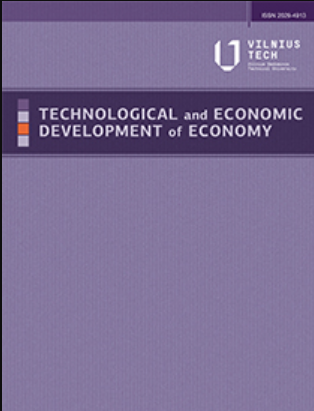主权风险溢价的全球模式和极端事件:模糊和深度学习比较
IF 4.8
2区 经济学
Q1 ECONOMICS
引用次数: 0
摘要
如今,在外国投资已变得越来越普遍,这意味着这些投资可能存在固有风险,而主权风险溢价就是衡量这种风险的标准。许多研究都对主权风险溢价的行为进行了研究,然而,目前的模型存在局限性,文献呼吁对这一问题进行进一步调查,因为分析投资者的风险意识需要行为因素。此外,以往研究中广泛使用的方法是回归模型,而文献显示这种方法还很缺乏。本研究提供了发展中国家和发达国家政府风险溢价驱动因素的新模型,比较了模糊决策树、模糊粗糙近邻、神经模糊法等模糊方法和深度递归卷积神经网络、深度神经决策树、深度学习线性支持向量机等深度学习程序。我们的模型通过提供有助于实现全球金融稳定的工具,在面对外国投资风险时对宏观经济政策的适宜性产生重大影响。本文章由计算机程序翻译,如有差异,请以英文原文为准。
GLOBAL PATTERNS AND EXTREME EVENTS IN SOVEREIGN RISK PREMIA: A FUZZY S DEEP LEARNING COMPARATIVE
Investment in foreign countries has become more common nowadays and this implies that there may be risks inherent to these investments, being the sovereign risk premium the measure of such risk. Many studies have examined the behaviour of the sovereign risk premium, nevertheless, there are limitations to the current models and the literature calls for further investigation of the issue as behavioural factors are necessary to analyse the investor’s risk perception. In addition, the methodology widely used in previous research is the regression model, and the literature shows it as scarce yet. This study provides a model for a new of the drivers of the government risk premia in developing countries and developed countries, comparing Fuzzy methods such as Fuzzy Decision Trees, Fuzzy Rough Nearest Neighbour, Neuro-Fuzzy Approach, with Deep Learning procedures such as Deep Recurrent Convolution Neural Network, Deep Neural Decision Trees, Deep Learning Linear Support Vector Machines. Our models have a large effect on the suitability of macroeconomic policy in the face of foreign investment risks by delivering instruments that contribute to bringing about financial stability at the global level.
求助全文
通过发布文献求助,成功后即可免费获取论文全文。
去求助
来源期刊
CiteScore
10.00
自引率
8.50%
发文量
66
审稿时长
15 weeks
期刊介绍:
Technological and Economic Development of Economy is a refereed journal that publishes original research and review articles and book reviews. The Journal is designed for publishing articles in the following fields of research:
systems for sustainable development,
policy on sustainable development,
legislation on sustainable development,
strategies, approaches and methods for sustainable development,
visions and scenarios for the future,
education for sustainable development,
institutional change and sustainable development,
health care and sustainable development,
alternative economic paradigms for sustainable development,
partnership in the field of sustainable development,
industry and sustainable development,
sustainable development challenges to business and management,
technological changes and sustainable development,
social aspects of sustainability,
economic dimensions of sustainability,
political dimensions of sustainability,
innovations,
life cycle design and assessment,
ethics and sustainability,
sustainable design and material selection,
assessment of environmental impact,
ecology and sustainability,
application case studies,
best practices,
decision making theory,
models of operations research,
theory and practice of operations research,
statistics,
optimization,
simulation.
All papers to be published in Technological and Economic Development of Economy are peer reviewed by two appointed experts. The Journal is published quarterly, in March, June, September and December.

 求助内容:
求助内容: 应助结果提醒方式:
应助结果提醒方式:


